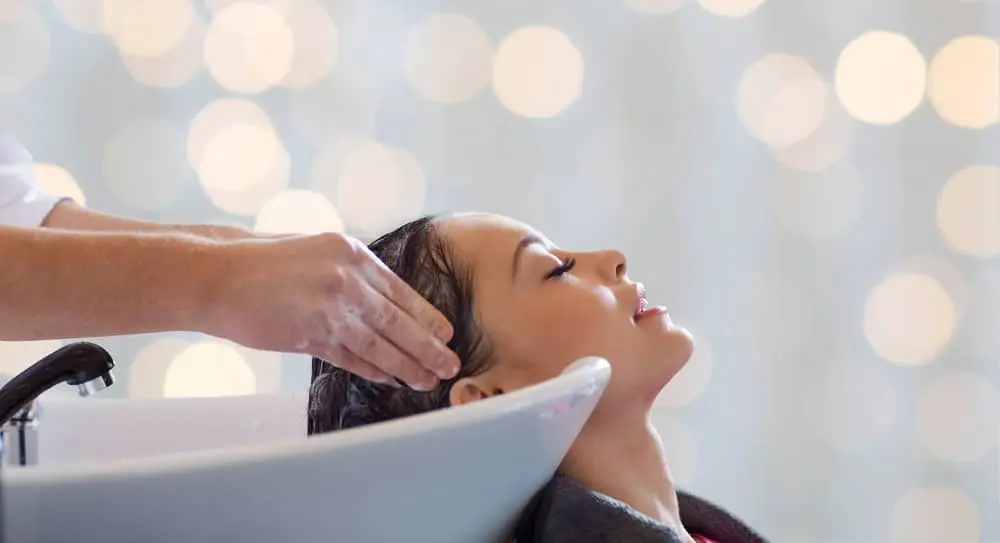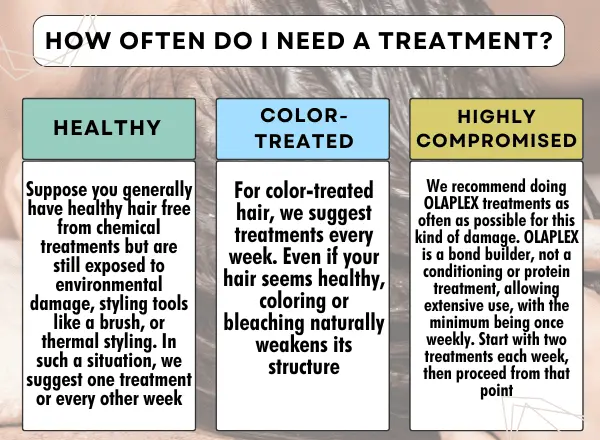The Secret to Fantastic Hair: What Does an Olaplex Treatment Do?
Each time you decide to color your hair, you are putting your strands at significant risk. Bleaching is particularly harmful. This is true if you’ve ever had crunchy, frizzy hair after going lighter. Olaplex provides a great solution. This specific treatment not only makes your hair appear and feel much healthier, but it also helps repair damage to individual strands. Indeed, you heard that correctly. Olaplex can significantly reduce breakage by mending broken bonds when applied in a professional salon setting.
What does an Olaplex treatment do? The substances in this amazing product repair damaged bonds at a molecular scale. Isn’t science fascinating? The primary component is bis-aminopropyl diglycol dimaleate. Even though it sounds complex, you don’t need to say this term to feel its effects. Olaplex focuses on the whole strand, from root all the way to tip. The outcome is softer, stronger hair that endures intense coloring and heat.
What Is Olaplex?
Olaplex is a line of hair repair, “bond-building” treatments that are getting buzz in the hair community, especially among people with damaged hair from excessive bleaching. It’s available in two forms: Olaplex can be combined with bleaching products to reduce damage, or just a standalone treatment. Numerous people with compromised hair have achieved fantastic results using Olaplex.
What Does Olaplex Claim To Do?
Olaplex says it can “repair broken disulfide sulfur bonds in the hair.” The treatment is labeled a “bond multiplier,” limiting hair damage during or after coloring.
Hair contains many keratin proteins, which contain the amino acid cysteine. Cysteine is unique since it has a sulfur (S) atom. Typically, two sulfur atoms join together to form a disulfide bond (S-S), establishing a link between two distinct proteins.
All these proteins that are holding hands are partly responsible for your hair’s general shape and strength. When hair undergoes perming or straightening, these bonds are intentionally broken into two SH (“free thiol”) groups, which are then reformed after the hair is styled into its new shape.
Re-forming these bonds often takes a few days (hence, do not wash your hair for a few days after perming, as it warps the shape).
The peroxide employed in the bleaching process may assist in fixing disulfide bonds… but ironically, it can also prevent these bonds from forming by attaching a sulfate group to the SH, leading to additional damage.
The Olaplex patent provides surprising detail about how it’s supposed to work. The short story is that both ends of bis-aminopropyl diglycol dimaleate connect with the sulfurs, creating an artificial, longer disulfide bridge.
In more detail, the “dimaleate” component of bis-aminopropyl diglycol dimaleate functions as Michael acceptors. In a Michael reaction, these react with an SH group to form covalent bonds.
So, a new disulfide link is created between the two sulfur atoms, which helps to strengthen the hair. This occurs quite rapidly—unlike hair straightening and perming, which occur faster than the peroxide capping reaction, resulting in significantly reduced hair damage during coloring.
The Five Stages of Olaplex
Here are the five stages of Olaplex in a nutshell:
1) Olaplex Number 1:
The first stage is the Olaplex bond multiplier, which can be used as a standalone treatment or mixed with color and put straight onto your hair in the foils. This concentrated initial salon step rebuilds broken disulfide bonds and begins preventing damage and repairing hair.
2) Olaplex Number 2:
After number 1, the bond perfector is put on after the color is rinsed. Number 2 is left on for 10-15 minutes to allow it to work its magic and fix all those broken bonds, resulting in the strongest, shiniest, and healthiest hair possible.
3) Olaplex Number 3:
The third stage is done at home—the hair perfector is a take-home treatment that is recommended to be used once a week. Number 3 is best applied prior to your shampoo and conditioner and left on for 10 minutes at the very least (but up to 30 minutes if you can!). The longer you can leave it, the better (Kim Kardashian swears by sleeping in hers overnight).
4) Olaplex Number 4:
The Olaplex bond maintenance shampoo can replace your regular shampoo and will help hydrate, strengthen, and top up your hair care at every wash. Designed to suit every hair type, Olaplex shampoo is made without sulfates and parabens and is safe for color-treated hair.
Thanks to the coconut oil-derived surfactant in the shampoo, it’s super bubbly, and a little goes a long way.
5) Olaplex Number 5:
A bond maintenance conditioner is also the final step in your Olaplex hair care treatment. Leave it on for three minutes before rinsing it off and enjoying the silky, well-moisturized hair you’ve always wished for.
How Often Do I Need A Treatment?
You understand that you can use Olaplex at any time, but how frequently should your hair be treated? Even though each person’s hair is a unique canvas with specific needs, here’s a crucial guide to getting your hair in the best condition possible according to the damage level.
Healthy
Suppose you generally have healthy hair free from chemical treatments but are still exposed to environmental damage, styling tools like a brush, or thermal styling. In such a situation, we suggest one treatment or every other week. Even completely untouched hair can become healthier with proper care. You may fall into one or two categories, considering how damage can affect the hair. Using Olaplex for treatment can mend the damage between sessions in this scenario. It will not only repair the existing damage but also help keep the healthy hair you currently have, making it more resilient than ever before.
Color-treated
For color-treated hair, we suggest treatments every week. Even if your hair seems healthy, coloring or bleaching naturally weakens its structure. That means that the hair must break first for chemicals to create color or textural changes in the hair follicle. Besides changing the color, you might style it using heat and risk exposing yourself to various damage.
Therefore, getting Olaplex treatments every week is essential to maintain the beauty of your colored hair! Pro tip: maintaining healthy hair allows the color to last longer, so it’s a double benefit.
Highly Compromised
Highly compromised hair can result from the hair being pushed too far chemically with color or texture services. It can also happen from consistently exposing your hair to heat styling tools, such as using a flat iron daily. This kind of damage can happen in various ways, and even dyeing your hair too frequently or undergoing extreme color or texture changes can lead to negative effects. We recommend doing Olaplex treatments as often as possible for this kind of damage.
Olaplex is a bond builder, not a conditioning or protein treatment, allowing extensive use, with the minimum being once weekly. Start with two treatments each week, then proceed from that point. Please pay attention to your hair and observe what it indicates it needs. If you are dealing with significant damage, you might also require additional treatments. Talk to your hairdresser for any other essential types of treatments.
Who Benefits from Olaplex?
Hairstylists everywhere praise Olaplex. Ask for this exceptional treatment if you bleach, highlight, or lighten your hair color. After a single application, your hair will be softer to the touch. Since it reduces the risk of breakage, you can color your hair without fear.
Olaplex isn’t solely for colored hair, though. It can also help prevent and lessen damage from chemical treatments and heat. Numerous stylists suggest using this treatment before getting a perm or a Brazilian blowout. It also helps reduce the likelihood of split ends caused by hairdryers and flat irons. Anyone who styles their hair can gain from this strand-saving product.





